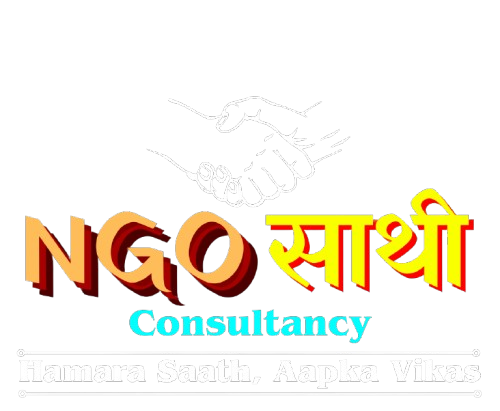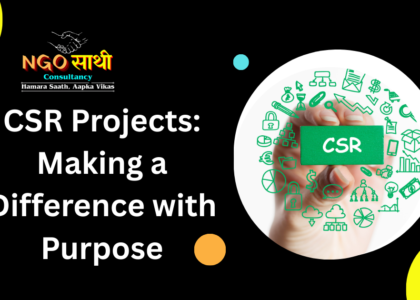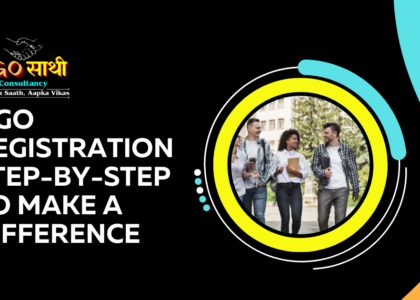Your NGO’s website only gets 0.05 seconds to make a first impression that can win or lose a potential supporter. A positive digital footprint has now become a must for NGOs to thrive in the networked world of today.
Building a robust web presence can be overwhelming, especially if you have limited funds. Online marketing provides cheap ways of connecting with individuals compared to traditional marketing. The digital world opens new doors for small organizations – Facebook alone reaches 2.6 billion monthly users, and mobile-friendly donation pages bring in 34% more contributions.
This piece will guide you through building and maintaining a powerful NGO digital presence on a budget. You’ll learn everything from using free Google Ad grants to implementing effective marketing strategies that will help your organization shine online.
Essential Digital Tools for Small NGOs on a Budget
Small NGOs need budget-friendly digital tools to build their online presence. Here are some simple tools that make a big impact without breaking the bank.
Social Media Management Made Simple: NGOs must share their stories and connect with supporters through social media. Hootsuite stands out as a complete solution that lets organizations manage multiple social accounts from one dashboard. Their nonprofit discount gives up to 50% off on plans starting at INR 4134.64 monthly. On top of that, Buffer’s free plan manages up to three social profiles – perfect for NGOs starting their digital experience.
Creating Professional Visual Content: Canva changes the game for NGOs that want to create professional-looking content. Their nonprofit program gives organizations:
- Over 100 million stock photos and graphics
- Premium templates and designs
- Team collaboration features for up to 10 members
Email Marketing Solutions: GetResponse offers powerful email marketing features with up to 50% discount for verified NGOs. Brevo (formerly Sendinblue) provides a free plan that lets you send daily emails – a great starting point for small organizations.
Website Building Tools: Wix leads website builders with its dozen pre-built nonprofit templates and impressive 70% discount on 2-year premium plans in certain countries. Squarespace offers intuitive tools designed specifically for nonprofit websites.
Analytics and Performance Tracking: Buzzsumo helps track keywords and content performance. The free plan offers:
- 10 monthly searches
- One content project
- Custom feed access
- Content analysis reports
Project Management Solutions: Asana’s free basic plan supports up to 15 team members with unlimited file storage and activity logging. This tool helps organize campaigns and coordinate volunteer efforts effectively.
Grammar and Content Quality: Grammarly’s free plan catches simple spelling and grammar errors. Their nonprofit program gives access to premium features at no cost. Your communications will maintain professional standards.
These tools can help small NGOs build a reliable digital presence while staying within budget. Most platforms offer special nonprofit pricing or free tiers, making them available to organizations of all sizes.
Building Your NGO Website Without Technical Expertise
Having a professional website may sound daunting, but today’s web builders have simplified the process of creating a website for NGOs. Studies indicate that 70% of donors visit a nonprofit’s website before donating, making a strong online platform essential.
Selecting the Right Website Platform: NGOs can create websites without technical know-how due to content management systems (CMS) specially created for nonprofits. The right platform should connect contact databases that help manage donors, members, and event registrants. On top of that, platforms like Wix provide more than a dozen templates built for nonprofit organizations, with options that work great for community events, environmental NGOs, and animal shelters.
Essential Website Elements: Your NGO website should include:
- A prominent donation button with multiple payment options
- Clear calls-to-action for volunteer sign-ups
- An event calendar for community involvement
- A blog section for regular updates
- Impact reports showcasing your achievements
Mobile Optimization Matters: Much of today’s web traffic comes from smartphones, making mobile-responsive design vital. On average, mobile-friendly donation pages bring in 126% more contributions. Your site must easily fit into a variety of screen sizes and orientations.
Designing Effective Donation Pages: The process of donating should be seamless and easy to use. These proven strategies work well:
- Keep forms short and ask only for essential information
- Offer suggested giving amounts with custom options
- Display your organization’s logo clearly to build trust
- Include impact statements that show how donations help
Content Management Tips: Fresh content keeps your website relevant and engaging. Your blog should feature success stories, testimonials, and program updates. Transparency builds trust, so detailed reports about fundraising efforts and their results matter.
Technical Considerations: Website builders typically include secure payment processing and SSL certificates. Sites such as Squarespace offer unlimited storage and bandwidth, so your site can scale as your organization grows. Builders introduce multilingual aspects that are ideal for NGOs with operations across regions. Regular website testing helps identify and fix technical issues quickly across devices and browsers. Small NGOs can build professional, effective websites that inspire trust and encourage support by doing this.
Implementing Effective Marketing for NGOs with Limited Resources
Marketing success doesn’t need deep pockets. Recent data shows that when people get involved with causes through social media, 55% take additional steps. These include money donations (68%), volunteering (53%), and event attendance (43%).
Email Marketing Excellence: Email marketing is the lifeblood of NGO communication. Tailored emails get 29% higher open rates and 49% better click-through rates. Here’s how to make emails work better:
- Split your email lists by donor behavior and demographics
- Write subject lines that grab your attention
- Add clear calls to action in every message
- Keep donors updated about your projects and their results
Social Media Strategy: Facebook sees over 500 million people watching videos daily, which creates amazing reach potential. Your strategy should:
- Tell your story through consistent, quality content
- Pick hashtags that boost visibility
- Stay active with your followers
- Show the work’s behind-the-scenes moments
Content Marketing That Connects: Great content goes beyond promotion. It should teach and connect with your audience. Share compelling stories about:
- Your program’s ground results
- What volunteers experience
- Words from those you help
- Key achievements and milestones
Making Use of Volunteer Skills: Volunteers often bring valuable marketing talents. Look for people skilled in:
- Graphic design
- Photography
- Content writing
- Social media management
Economical Advertising: NGOs can get free advertising credit through Google Ad Grants. Use analytics tools to track how well your ads perform and adjust based on what the data tells you.
Building Strategic Collaborations: Work together with other NGOs and corporate partners to reach more people. Joint projects build trust and help you find new supporters. Think about hosting online events, such as webinars and panels, to connect with supporters everywhere.
Note that steady marketing efforts matter more than having a big budget. Small NGOs can make a real difference online by telling authentic stories and building meaningful connections with their audience.
Conclusion
Small NGOs shouldn’t feel overwhelmed by digital transformation. Smart use of available tools and strategic planning helps organizations build a powerful online presence. Many free and discounted resources make digital success possible, whatever the budget constraints.
Success stories show that a strong digital presence needs consistent effort rather than massive budgets. NGOs can steadily expand their digital footprint with simple tools like Canva for design and Hootsuite for social media management. The organization’s website can look professional and attract donors and volunteers using nonprofit-specific website builders.
Digital presence takes time to develop naturally. The essential elements need attention first – an accessible website, active social media accounts, and regular email updates. Your organization can add sophisticated strategies based on specific needs and goals as digital expertise grows.
Today’s small steps create meaningful changes tomorrow. Begin with one or two digital initiatives, track their results, and build on your wins. Your NGO’s digital path might start small, but its potential to create change remains limitless.






